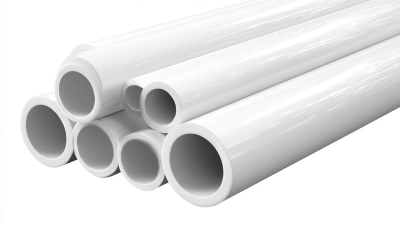Email Id: sale@adctooling.com
In the intricate landscape of fluid control systems, the plug valve emerges as a critical component, providing reliable and efficient shutoff capabilities. According to a recent industry report by MarketsandMarkets, the global valve market is projected to reach USD 94.4 billion by 2026, with plug valves playing a pivotal role in this growth due to their versatility in various applications, including oil and gas, water management, and pharmaceuticals. These valves, characterized by a cylindrical or tapered plug that can be rotated within the valve body to regulate flow, offer unique advantages such as low pressure drops and minimal leakage. As industries continue to evolve and prioritize efficiency, understanding the operational principles and benefits of plug valves becomes essential for engineers and facility managers alike, ensuring optimal performance in their fluid control systems.

A plug valve is a type of quarter-turn valve that uses a cylindrical or conical plug to control the flow of fluids through a pipe. The design typically features a rotating plug with one or more hollow passages that align with the pipeline when the valve is open. This mechanism allows for rapid flow regulation and offers minimal resistance to fluid movement, making plug valves an efficient choice for many fluid control applications.
When considering the installation of a plug valve, it's essential to ensure that the valve is suitable for the specific fluid being managed, including pressure and temperature conditions. Additionally, regular maintenance is crucial to prevent wear and tear. **Tip:** Inspect the valve for any signs of leakage or corrosion periodically, as these issues can compromise efficiency and safety.
Another important factor is the material selection for the plug and body of the valve. **Tip:** Choose materials that are compatible with the fluids they will handle to avoid chemical reactions that can lead to valve failure. Overall, the design and functionality of plug valves make them an indispensable component in fluid control systems across various industries.
Plug valves play a pivotal role in the functionality of fluid control systems due to their inherent efficiency and reliability. According to a report from the Valve Manufacturers Association, plug valves are known for their excellent sealing capabilities and low operational torque, making them ideal for applications that require quick on-off flow control. In situations where pressure and temperature can fluctuate, the design of a plug valve allows for minimal leakage and durable performance, typically offering a lifespan of up to 25 years with proper maintenance.
Furthermore, in highly regulated industries such as oil and gas, the reliability of plug valves is critical. Data from the American Petroleum Institute indicates that the correct selection and maintenance of valves can lead to significant reductions in operational costs, potentially saving companies millions of dollars annually. The straightforward design of plug valves not only facilitates easy installation and maintenance but also promotes faster response times, which is essential in preventing potential system failures or environmental hazards. This efficiency is enhanced by innovations in materials and coatings, which have further improved the performance and lifespan of plug valves in demanding conditions.
| Dimension | Description | Importance |
|---|---|---|
| Material | Typically made of brass, stainless steel, or plastic | Ensures durability and resistance to various chemicals |
| Seal Type | Loosely fitting or tight seal options | Prevents leakage and maintains pressure |
| Flow Direction | Bi-directional flow | Facilitates flexibility in pipeline arrangements |
| Operating Pressure | Can handle pressures up to 600 psi | Supports various industrial applications |
| Size Range | Available in sizes from 1/4" to 12" | Accommodates different flow rates and applications |
| Advantages | Quick opening and closing; low torque operation | Enhances operational efficiency and reduces wear |
| Applications | Used in oil & gas, water treatment, and HVAC systems | Versatile solution for various industries |
When it comes to fluid handling, choosing the right type of valve can be critical for ensuring efficient operation.
 Plug valves are known for their simple design and reliable performance, making them a popular choice in many fluid control systems. Unlike gate or ball valves, which rely on a rotating ball or a sliding gate, plug valves feature a cylindrical or tapered plug that can be rotated to open or close the flow path, allowing for quick and decisive control over the liquid or gas.
Plug valves are known for their simple design and reliable performance, making them a popular choice in many fluid control systems. Unlike gate or ball valves, which rely on a rotating ball or a sliding gate, plug valves feature a cylindrical or tapered plug that can be rotated to open or close the flow path, allowing for quick and decisive control over the liquid or gas.
Tip: When selecting a valve for your system, consider the type of fluid and the pressure requirements. Plug valves perform exceptionally well with viscous fluids and offer excellent sealing capabilities, minimizing leaks.
In a comparative analysis, while ball valves have a quicker action and are often more compact, they may not perform as effectively at high pressures and temperatures. On the other hand, gate valves, although good for straight-line flow, can lead to turbulence and are slower to operate. The plug valve’s ability to handle a wide range of conditions makes it an essential option for those managing complex fluid systems.
Tip: Always review maintenance requirements; plug valves generally have fewer moving parts, which can mean lower maintenance efforts compared to other valve types, making them both cost-effective and efficient over time.
The demand for plug valves is closely tied to the overall growth of the global industrial valves market, which is projected to increase from $86.67 billion in 2025 to $131.6 billion by 2033, reflecting a compound annual growth rate (CAGR) of 6%. Plug valves play a critical role in fluid control systems, offering reliability and efficiency across various industrial applications. As industries streamline operations and enhance process automation, the importance of such valves will only continue to rise.
In 2023, the global ventilation system market alone was valued at approximately $28.1 billion and is expected to reach $56.6 billion by 2033, growing at a CAGR of 7.7%. This surge indicates a robust demand for effective fluid control solutions, positioning plug valves as essential components in both ventilation systems and broader industrial contexts. With the push for greater energy efficiency and improved operational flexibility, the plug valve sector is poised for significant advancements and innovations, aligning with the overarching trends in the industrial landscape.

Plug valves play a crucial role in various industrial sectors, particularly in oil, gas, and water management. In the oil and gas industry, the global market for plug valves is projected to grow substantially, reaching approximately $2 billion by 2025, driven by increasing demand for efficient fluid control systems. Specifically, these valves facilitate the rapid on-off flow control of hydrocarbons, making them ideal for high-pressure environments. Their design allows for minimal flow restriction, which is essential for optimizing the performance of pipeline systems.
In water management, plug valves are integral in treatment plants and distribution systems. The global water and wastewater treatment market is expected to reach $770 billion by 2033, emphasizing the need for reliable valve systems that can withstand harsh conditions. Plug valves ensure tight sealing, preventing leaks and contamination, which is vital for maintaining water quality. Their robust construction allows them to handle various fluids, including corrosive substances, making them indispensable in both municipal and industrial applications. The increasing focus on sustainable water management practices further underscores the importance of plug valves in safeguarding our water resources.
This bar chart illustrates the distribution of key applications of plug valves across various sectors. The oil industry represents the largest share at 35%, followed by the gas industry at 30%. Water management and chemical processing have significant applications at 20% and 10%, respectively. The mining sector has the smallest share at 5%. Plug valves play a crucial role in controlling fluid flow in these industries, ensuring efficiency and safety.





